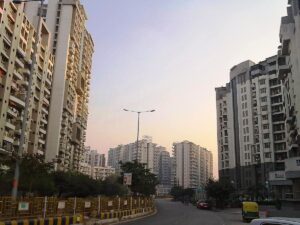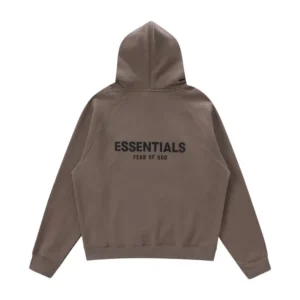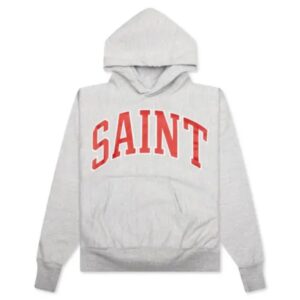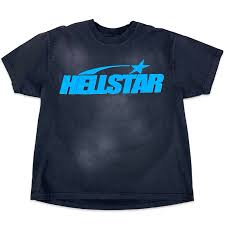
1. Introduction to Kasol
A Quick Overview of Kasol
Kasol is one of those places that always makes me want to go back. Nestled in Himachal Pradesh along the banks of the Parvati River, it’s a chill little village surrounded by towering pine trees, cozy cafés, and snow-dusted peaks. Whether you’re planning a solo trip, a getaway with friends, or even a digital detox, this place has something magical.
It’s also a bit unpredictable. One minute it’s sunny, the next it’s drizzling, and if you’re not prepped for that, your trip might get a little uncomfortable. That’s why packing the right stuff isn’t just helpful—it’s essential.
I’ve been there more than once, and every time I’ve learned something new about what to carry and what to leave behind. And if it’s your first time, or even your third, this guide will help you pack smartly for kasol trekking packages —no matter what season you’re heading out in.
By the way, if you’re planning to explore nearby gems like Kheerganga, Tosh, or Malana, I’d recommend going with a local crew who knows their stuff. I’ve had a solid experience with a group I found through a platform that connects you with experienced, low-key local guides who handle everything from logistics to permits. It made the trek feel less like a chore and more like a real escape. You’ll know them when you find them—they don’t overhype things, just quietly deliver.
2. Why Smart Packing Matters

Let me be honest—packing light but right saved me from a ton of stress in Kasol. The weather there has mood swings. Even in summer, mornings and evenings can be cold enough to make you wish you packed that extra hoodie. Snow is a genuine possibility if you go there in the winter. The narrow roads and uphill treks don’t exactly make room for dragging around a giant suitcase, either.
That’s why I’ve broken down this list season by season. If you know what to pack, you won’t be that person scrambling through cafes asking for a phone charger or looking miserable because your shoes gave up mid-hike.
Smart packing isn’t just about comfort—it’s about making your trip to Kasol better. It lets you focus on what really matters: soaking in the views, enjoying the café vibes, and maybe even finding your own secret trail.
Ready to pack like a pro?
3. Clothing Essentials – Season by Season
Spring (March to May)
In Kasol, spring offers the best of both worlds. The snow starts to melt, flowers start popping out, and the days are generally sunny with a nip in the air during evenings. I usually wear light layers—think T-shirts, full-sleeve shirts, and a warm jacket for the evenings. A light down jacket or even a fleece hoodie should be enough.
Must-Pack for Spring:
-
Cotton T-shirts
-
Full-sleeve flannel or quick-dry shirts
-
Light woolen or fleece jacket
-
Comfortable jeans or trekking pants
-
Sunglasses & a cap (yes, the sun can be harsh at times)
-
Lightweight rain jacket (because mountain weather can be sneaky)
I’ve had mornings where I walked out in a T-shirt and afternoons where I was thankful I had a windcheater. Layering is the key—don’t skip it.
Summer (June to August)
Here’s the thing—Kasol isn’t your typical hot summer getaway. Even in June, evenings are cool, and if it rains, the temperature drops fast. But yes, the days are much warmer than other seasons. This is also when monsoon kicks in, especially by July, so waterproof everything becomes a must.
Must-Pack for Summer:
-
Breathable cotton clothes
-
Waterproof poncho or raincoat
-
Quick-dry trekking pants
-
Waterproof shoes (this saved my trip, no kidding)
-
Mosquito repellent
-
Extra socks (wet socks = blisters, don’t risk it)
During this time, the trails to places like Kheerganga get muddy. That’s why guided trips with locals really help. The ones I went with even had walking poles and rain covers ready—they knew the terrain like the back of their hand.
4. Footwear: Don’t Compromise Here
If you’re only packing one thing right, let it be your shoes. I’ve seen people show up in flip-flops, only to end up barefoot halfway through a trail. Trust me, get solid, all-terrain trekking shoes. They should be waterproof and broken in (please don’t wear brand-new shoes for a trek).
Season Tips:
-
Spring/Summer: Lightweight trekking shoes work best. Add waterproofing if possible.
-
Autumn/Winter: Go for insulated boots if you’re planning to trek. Kasol gets frosty in the evenings.
Also, throw in a pair of flip-flops or sliders for lounging around your homestay or hostel. Your feet will thank you.
5. Personal Care and Health Kit
Mountain trips demand a little extra from your body, so I always carry a small health kit. Nothing fancy, just the basics that save you from discomfort when you’re miles away from a pharmacy.
Here’s what’s always in my kit:
-
Paracetamol, ibuprofen
-
Antiseptic cream
-
Band-aids & pain relief spray
-
Motion sickness tablets (for those winding Himachal roads)
-
Any personal prescription meds
-
Lip balm & sunscreen (yes, even in winter)
On one of my early trips, I forgot sunscreen and came back with a sunburn that stayed for weeks. Lesson learned. The sun up there is intense, and the cold air dries out your skin faster than you’d think.
6. Winter Essentials – Packing for the Cold
Kasol in winter is straight out of a postcard. Snow-covered peaks, frozen trails, and bone-chilling winds—it’s beautiful, but you’ve got to respect the weather. If you’re going between December and February, pack for proper winter. I’m talking layers, thermal wear, gloves, the whole deal. The cold isn’t just uncomfortable—it can ruin your plans if you’re not ready.
My winter must-haves:
-
Thermal base layers (top and bottom)
-
Heavy woolen or down jacket
-
Fleece hoodie or sweatshirt
-
Woolen cap/beanie
-
Gloves (preferably water-resistant)
-
Woolen socks (extra pairs)
-
Moisturizer and lip balm (the dryness is no joke)
-
Heat packs (small, cheap, and super useful on cold nights)
Walking through the snow to reach a tucked-away café or hike a trail is magical—if you’re warm and dry. The crew I usually go with once helped me find last-minute snow boots from a local vendor when I forgot mine. They know people, and in the mountains, that’s gold.
7. Tech Gear You Shouldn’t Forget
Let’s talk gadgets. Now, I’m not saying you need to carry your entire tech drawer, but a few basics can make your trip easier—especially since electricity isn’t always consistent in remote stays.
Here’s my usual tech checklist:
-
Power bank (a 20,000 mAh one is ideal)
-
Universal charger + extra USB cable
-
Headlamp or flashlight (a lifesaver during power cuts)
-
Travel adapter (if you’re carrying gadgets with different plugs)
-
Camera (even your phone is fine, just make sure storage is cleared)
One thing I learned early on: network can be patchy, so download offline maps, songs, and maybe even some episodes of your favorite show. And always keep your gear packed in waterproof pouches or zip locks—sudden rain can mess up electronics real fast.
8. Documents and Identification
It may seem like a no-brainer, but I’ve seen folks get into trouble for missing something basic like an ID. Some stays in Kasol—even the cool, artsy ones—ask for valid ID. If you’re going into restricted trekking zones, permits may be needed too.
Here’s what I always carry:
-
Aadhar card or any government-issued ID (original + copy)
-
A few passport-size photos (useful for permits)
-
A small notebook with emergency contacts
-
Printed itinerary if booking through a guide (especially helpful for group treks)
One time, my phone died and I couldn’t show my ID at a checkpoint. Luckily, I had a hard copy in my bag—that saved me a lot of hassle.
9. Backpack vs Suitcase – What Works Best in Kasol

If you’re still thinking about rolling a suitcase to Kasol, let me stop you right there. The roads aren’t made for that, and you’ll hate dragging wheels through dirt paths and uneven trails. Go with a sturdy backpack—it’s your best bet.
My ideal setup:
-
50-60L trekking backpack for all essentials
-
Small 10-15L daypack for café hopping and short hikes
-
Rain cover for both bags (don’t skip this)
-
Packing cubes to keep things organized (game changer)
Also, your bag should be easy on your back. I always choose one with padded shoulder straps and a waist belt—it distributes weight way better. If you’re joining a local trek team (like the one I mentioned before), they often help with load distribution or offer porters on longer treks. Makes life way easier.
10. Food and Snack Packing Tips
While Kasol has plenty of great food joints (some with killer momos and banana pancakes), there are times when you’ll need your own stash—like during treks or power cuts at night. I always carry a small food pouch with energy boosters.
My go-to snack list:
-
Protein bars or trail mix
-
Instant noodles or soups
-
Energy drinks or electrolyte powder
-
Chocolate (it’s not just comfort food; it helps in cold)
-
Dry fruits and nuts (light, filling, nutritious)
These small snacks have saved me during long hikes when I didn’t want to stop or couldn’t find food nearby. Also, I usually avoid carrying too much junk food—it just adds unnecessary weight and trash.
11. Adventure Gear – Optional but Useful
If you’re planning on doing more than just chilling by the river or sitting in cafés (which is totally fine too), you’ll want to carry some basic adventure gear. I’ve gone on treks, done a little river-side yoga, and even had spontaneous camping nights—none of which would’ve been smooth without the right stuff.
Stuff I like to carry:
-
Trekking poles (especially useful on slippery trails)
-
Compact sleeping bag (good if you’re camping or staying in budget hostels)
-
Reusable water bottle with filter (the river water is clean, but better safe than sorry)
-
Headband or buff (keeps hair, sweat, and cold off your neck)
-
Microfiber towel (dries quick, weighs nothing)
Again, the folks I mentioned earlier often provide this stuff during group treks. That saved me a lot of packing space. But if you’re going solo, it’s best to be self-reliant.
12. Packing for the Vibe – Kasol’s Culture Scene
Here’s something people don’t often talk about—Kasol has a vibe. Think reggae beats in cafés, art on hostel walls, and travelers from all over the world. It’s chill, laid-back, and creative. So I always pack a few things that help me blend in and enjoy the scene more.
Vibe boosters:
-
A small notebook or journal (perfect for riverside writing)
-
Bluetooth speaker (use respectfully)
-
A few good books or a Kindle
-
Playing cards or travel games (great icebreakers)
-
A light musical instrument (ukulele, harmonica, whatever you vibe with)
These aren’t must-haves, but trust me, they enhance the experience. Kasol isn’t just about trekking—it’s about unwinding, connecting, and making memories. So bring what feels right to you.
13. Responsible Travel Gear – Leave No Trace
Kasol is beautiful because it’s still somewhat untouched. But that’s changing fast, and it hurts to see plastic bottles or snack wrappers lying around. I try my best to leave no trace, and I hope you will too. Here’s what I pack to do my bit:
Eco-friendly musts:
-
Cloth tote bags for shopping
-
A reusable spoon and fork (or spork)
-
Collapsible coffee mug
-
Trash bags (always carry your own out)
-
Biodegradable wet wipes
If you’re trekking with a guide, the good ones The Searching Souls encourage sustainable practices. They even offer cloth bags to collect any trash on trails—it’s a small gesture that makes a big impact.
14. Local Tips – Packing Based on Locals’ Advice
Over time, I’ve learned more from chai shop uncles and homestay hosts than from any travel blog. Locals know what works here—so I always ask for their tips. Based on those chats, here are a few packing hacks I swear by:
-
Always carry some cash. ATMs work—but not always.
-
A torch is more useful than a phone flashlight in power cuts.
-
Avoid bright or flashy clothes—neutral colors help you blend in better.
-
Keep some ready-to-eat snacks in case cafés shut early due to weather.
-
A plastic sheet or emergency mat can be used anywhere—from a picnic to unexpected rain cover.
Being prepared means fewer surprises and more room for spontaneous fun. That’s the whole point of traveling here.
15. Final Packing Checklist – The One-Page Reference
If you’re like me, you’ll appreciate a final checklist before zipping up your bag. Here’s a simple table to help you double-check your gear:
| Category | Essentials |
|---|---|
| Clothes | Thermals, jackets, T-shirts, trekking pants, socks, gloves, raincoat |
| Footwear | Waterproof trekking shoes, flip-flops |
| Toiletries | Toothbrush, lip balm, sunscreen, moisturizer, wet wipes |
| Health Kit | Painkillers, antiseptic cream, meds, mosquito repellent |
| Tech Gear | Power bank, charger, headlamp, camera, extra batteries |
| Travel Documents | ID card, copies, permits, contact list |
| Snacks | Protein bars, dry fruits, instant noodles, chocolates |
| Adventure Gear | Trekking pole, sleeping bag, water bottle, microfiber towel |
| Vibe Gear | Book, journal, Bluetooth speaker, cards |
| Sustainable Items | Cloth bags, reusable cutlery, trash bags |
Tick these off as you go and you won’t miss a thing. I still do this before every trip.
Conclusion
Packing for Kasol isn’t about cramming everything into a bag—it’s about being thoughtful. The mountains are peaceful, but they demand respect. The weather shifts, the roads twist, and the real magic happens when you’re prepared enough to just go with the flow.
Every time I’ve gone, I’ve packed lighter and smarter—and I’ve always come back with heavier memories. Whether you’re there to hike, chill, explore nearby villages, or just sit by the river with a good book, having the right gear makes it better.
And if you’re considering exploring beyond Kasol—like trekking to Kheerganga or camping in Tosh—I’d genuinely recommend finding a local group that knows the terrain. There’s this small but efficient team I’ve used more than once—they’re not flashy, but they get the job done and keep the vibe intact.
Now go pack smart, and enjoy the hills.
FAQs
Q1: Is Kasol suitable for solo travelers?
Absolutely. It’s safe, welcoming, and full of like-minded travelers. Just be street-smart and connect with local guides if venturing into remote areas.
Q2: How many days should I plan for Kasol?
3 to 5 days is ideal. Enough to explore Kasol, do a day trek, and chill without rushing.
Q3: Do I need a permit for trekking near Kasol?
Yes, for certain trails like Kheerganga. A good local guide will handle this for you.
Q4: Can I rent trekking gear in Kasol?
Yes, but quality varies. It’s better to carry your own or go through a trusted local group that provides gear.
Q5: What’s the best season to visit Kasol?
Spring and autumn are perfect. Avoid peak monsoon and go in winter only if you’re ready for snow and cold.






